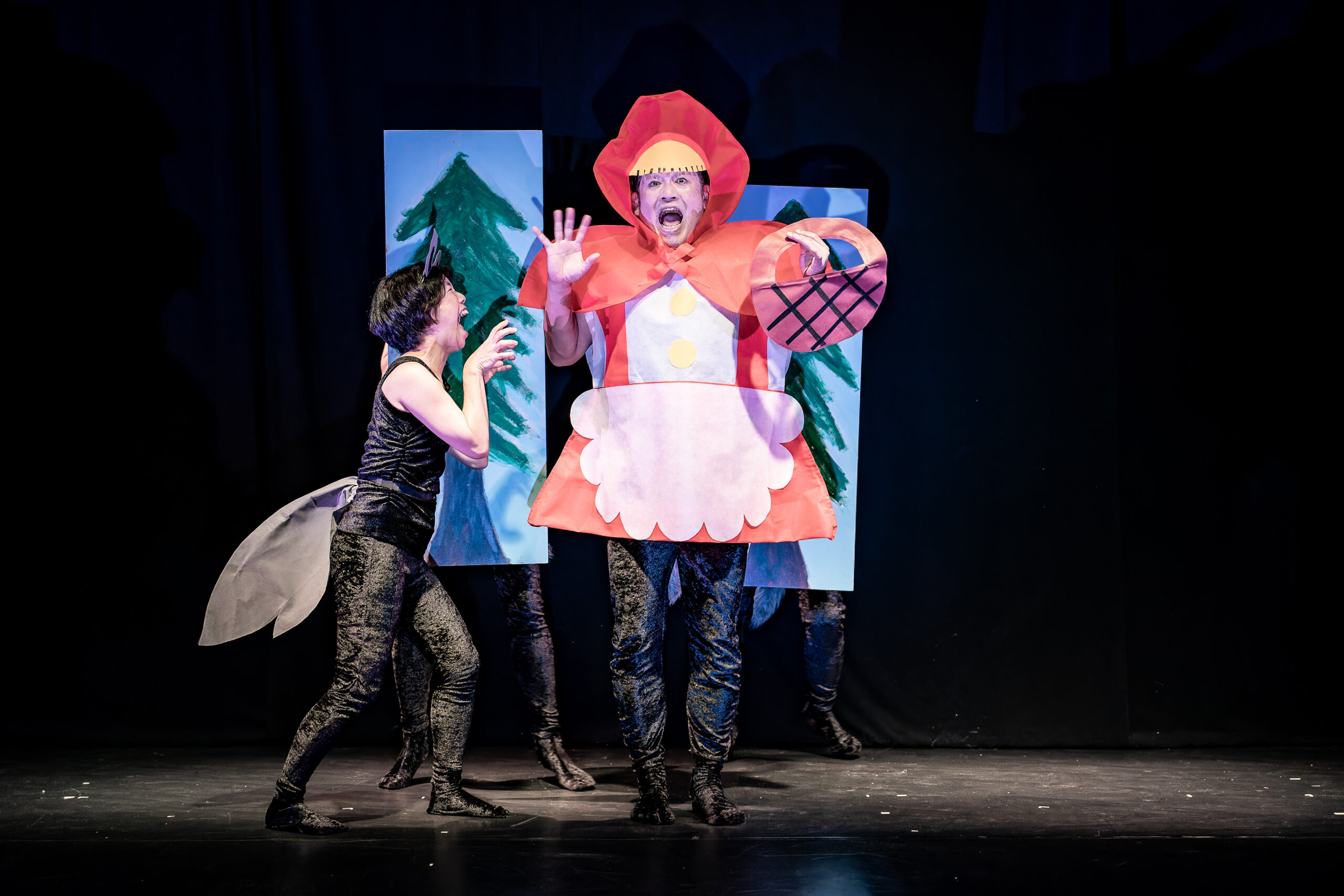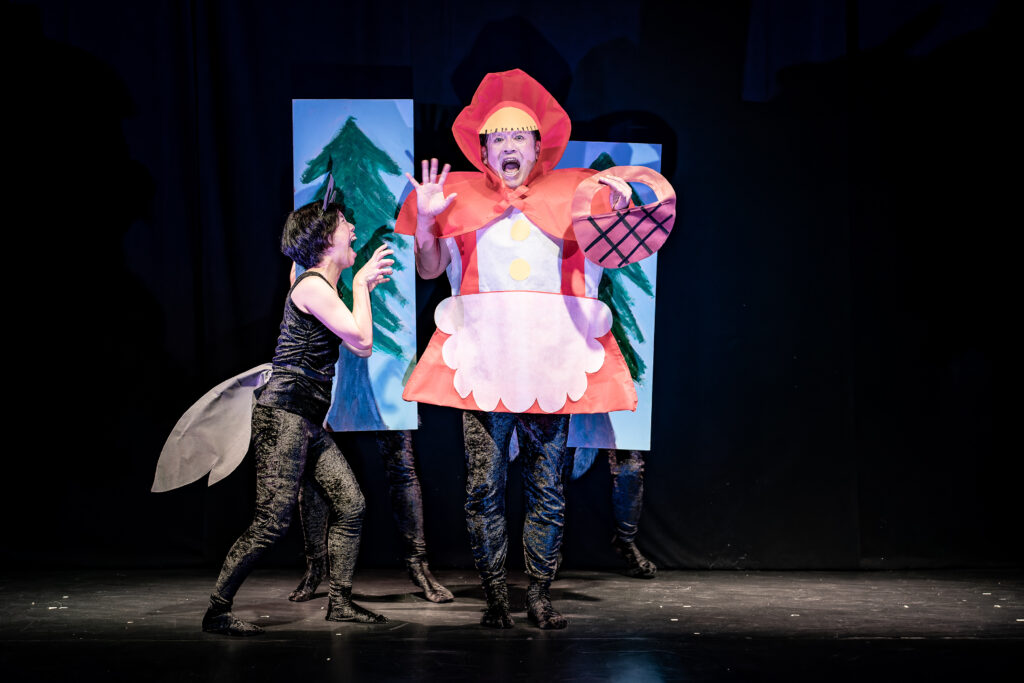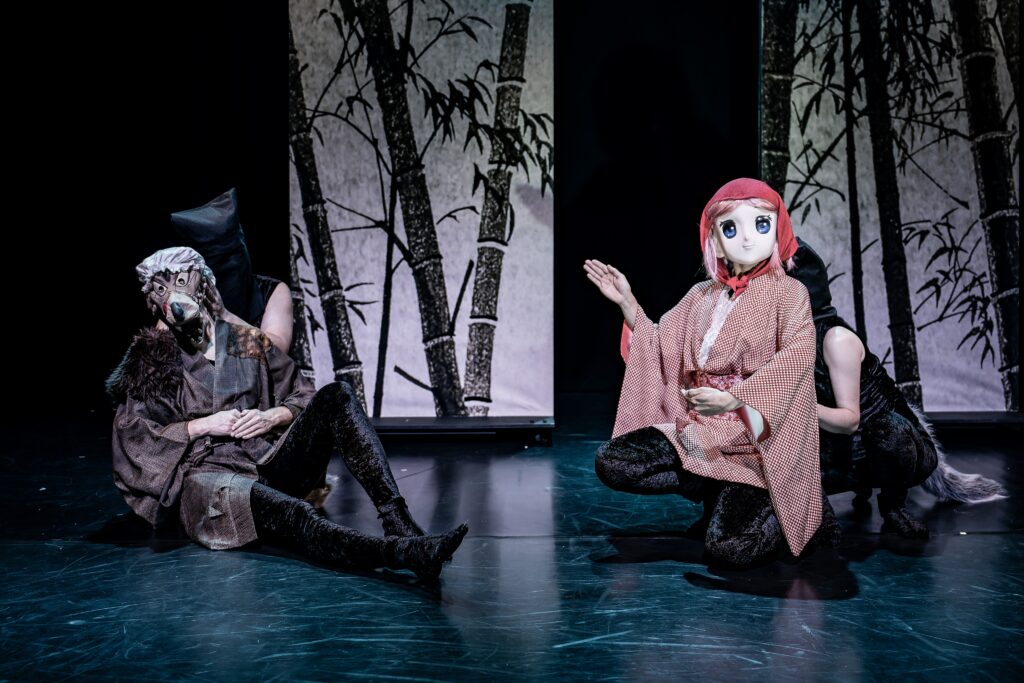

Mukashi, Mukashi (Once upon a time), concept and direction by David Danzon (in collaboration with the ensemble), additional choreography by Mathew O’Connor, Theatre Centre, closes Sept. 29. tickets.theatrecentre.org.
Sometimes a bit of whimsy is a welcome tonic in a troubled world. That is the experience being offered by Toronto’s acclaimed dancetheatre company Corpus.
For their new show Mukashi, Mukashi (Once upon a time), Corpus has teamed up with the Osaka-based KIO Company, and this Canadian-Japanese co-production is a rather delightful mix of eastern and western theatrical traditions. Mukashi debuted at Japan’s Toyooka Theatre Festival in 2023, and these Theatre Centre performances are the show’s Canadian debut.
The concept for Mukashi, Mukashi (which I gather means Once upon a time), is the brainchild of Corpus’ artistic director, David Danzon. The premise is the exploration of central characters in the fairy tales and folklore of both cultures. In the western tradition, Danzon has singled out the big bad wolf, while the benign crane is central to Japan’s myths and legends.
The structure of Mukashi is a series of short scenes with either the wolf or the crane as the major player. Central to the piece are the four performers who have to switch roles at a moments’ notice.
Kohey Nakadachi from KIO has great fun playing all the wolves, while his KIO colleague, the gamin-like Sakura Korin is just fun to look at no matter who they are. The western side is represented by Japanese-born, Canadian-based dancer/actor Takako Sagawa, a veteran performer with Corpus, and the willowy and graceful Kaitlin Torrance.
A lot is asked of the ensemble in terms of acting, dancing and singing, and all of them have charisma up the whazoo.
For example, Mukashi presents several versions of the Red Riding Hood story – one as a fast-paced cartoon, with appropriate cartoon-like music, and another as if the characters were on a tell-all Jerry Springer-type show with fights breaking out between them.
On the other hand, the crane episodes are treated as restrained, ritualistic storytelling, or are depicted through dance or movement. The dying crane dance performed by Torrance is a shimmering vision of beauty.
Part of the visual fun are the imaginative costumes by Japanese designer Atsuko Kiyokawa, augmented by the creative sets and lighting by Swiss-born Yann Becker who now makes his home in Osaka.
In terms of costume, it is all about colour and exaggeration. In terms of set, panels are pushed around by the cast to create playing spaces. They also manipulate quirky props such as a bed created by a performer standing between two boards, the first up to her neck and painted like a blanket, the second behind her, which is taller, featuring a painted pillow.
The art of origami is prominently featured, and many paper cranes find their way on stage, often made before our eyes. Danzon has also cleverly incorporated aspects of traditional Japanese Bunraku theatre where a human is manipulated like a puppet. There is also a scene featuring live anime.
Most of the dialogue is in Japanese but there are surtitles in both English and French. Much of the music is Japanese folk song, while Canadian Anika Johnson, from the uber-talented Johnson musical family, has created an ambient score where needed.
Mukashi, Mukashi does not provoke, nor disturb, nor trouble. It has no agenda except to entertain.

